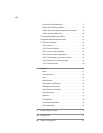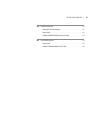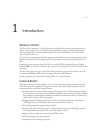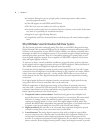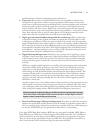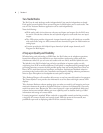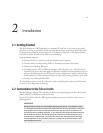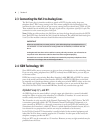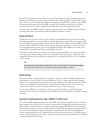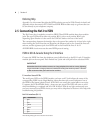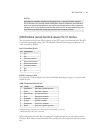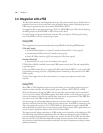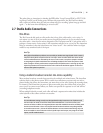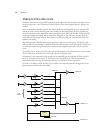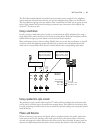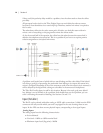
INSTALLATION | 7
In the USA & Canada a direct connection to the “bare copper” 2-wire U interface is required.
erefore, the USA & Canada interface module includes an integral NT1 and has RJ-11 style
jacks. In the rest of the world, the telephone company provides the NT1, and the 4-wire ISDN
S-interface will be used with an 8 pin RJ-45 style jack. Normally we ship Nx12s to North
America with the U-interface module and to other areas with the S-interface module.
In either case each ISDN interface has three connectors. Since each ISDN connection has two
channels, this means each interface module handles 6 ‘dialtones’ or ‘lines’.
Data and Voice
ISDN lines may be used for voice signals encoded in standard fashion to allow inter-working
with analog telephones, or may be used to transmit digital data streams. e latter mode is used
for such applications as high-speed Internet access. It is also the mode used with MPEG codecs,
in which case the ISDN line may be carrying voice signals, but is doing so in a format that is
not compatible with the analog part of the telephone network. e distinction is made in the
automatically conveyed Setup message that begins each call.
Normally, the Telos Nx12 uses only the voice mode, so data capability is not necessary. Often
voice costs extra, whereas this is rarely true for data. Of course, you may use a line with both
capabilities. Just be sure the BRI circuit supports the Circuit Switched Voice (CSV) capability
as well as data.
TIP
If this line may be “borrowed” at times for use with an audio codec, such as the Telos Zephyr,
you need to be sure that the Circuit Switched Data (CSD) capability is enabled.
Hunt Groups
e most common configuration for on-air phone system is to have the different phone num-
bers linked in a “Hunt Group,” also called “Rollover Lines,” or “Incoming Service Grouping
(ISG).” A hunt group allows you to give out a single number to the audience and each call will
“hunt” to an unused line. Sometimes one or two numbers will be reserved for a “hot line” or
“warm line” in which case those numbers would not be part of the hunt group.
In some cases ISDN lines configured to hunt may deliver all calls to a single DN (phone
number). In this case, you must enter this same DN for each of the DNs on each of the hunting
channels.
Special Considerations for Euro-ISDN (ETS 300) users
Some Euro-ISDN implementations deactivate BRI circuits that have been idle for more than a
given length of time. Since this is a normal occurrence, the Desktop Director and system front
panel will not show these lines out of service when this happens. While this will not interfere
with normal operation, it can give a false sense of “security” that everything is working when, in
fact, the circuit could have stopped working. It is impossible for the Nx12 to distinguish be-
tween a deactivated circuit and a malfunctioning circuit until you try to use it. For this reason, if
you are using ETS 300, and your phone system is mission critical, you should ask your telephone
company to disable this function.



